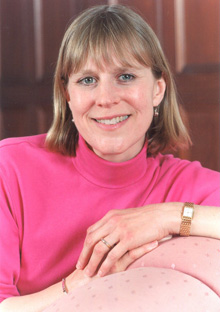The Babysitters Are Back!

PAGE 2
RB: What is about the relationships that had so many people trying to emulate them?
AM: I think it was the character of the girls, not just the fact that Stacey was a fashionista and Claudia liked art. It was more the fact that the girls—even Mary Anne, in her own quiet way—were very confident. They just decided that they were going to start a business and they were going to run it and make it work and be as independent as they could be, and I think that that appealed to kids.
RB: What lessons do you hope your readers come away with after reading your books?
AM: Mostly, I hope that kids are entertained and have an enjoyable reading experience. I hope that they come away with images of girls who are positive role models who are take-charge. These are girls who have formed their own business. They're responsible, they try to solve their own problems without adult help unless its absolutely necessary, so they're creative, and, mostly, confident. I think that's really important for kids—boys and girls—to see.
RB: Did you ever expect the level of success the series achieved, or are you still sort of surprised at what a phenomenon it became?
AM: I was surprised in the beginning. We all were. Nobody had expected it. It was supposed to be a four-book miniseries—one book about each of the main characters—so when we began to get this incredible response, we were all pretty shocked. And then 25 years later, I was equally surprised. And I was more surprised to find out about the now-adult fans who like the books than I was to find out there were 8- and 9-year-olds enjoying them. But it was a pleasant surprise.
Get Ann M. Martin's recommended reading list!
AM: I think it was the character of the girls, not just the fact that Stacey was a fashionista and Claudia liked art. It was more the fact that the girls—even Mary Anne, in her own quiet way—were very confident. They just decided that they were going to start a business and they were going to run it and make it work and be as independent as they could be, and I think that that appealed to kids.
RB: What lessons do you hope your readers come away with after reading your books?
AM: Mostly, I hope that kids are entertained and have an enjoyable reading experience. I hope that they come away with images of girls who are positive role models who are take-charge. These are girls who have formed their own business. They're responsible, they try to solve their own problems without adult help unless its absolutely necessary, so they're creative, and, mostly, confident. I think that's really important for kids—boys and girls—to see.
RB: Did you ever expect the level of success the series achieved, or are you still sort of surprised at what a phenomenon it became?
AM: I was surprised in the beginning. We all were. Nobody had expected it. It was supposed to be a four-book miniseries—one book about each of the main characters—so when we began to get this incredible response, we were all pretty shocked. And then 25 years later, I was equally surprised. And I was more surprised to find out about the now-adult fans who like the books than I was to find out there were 8- and 9-year-olds enjoying them. But it was a pleasant surprise.
Get Ann M. Martin's recommended reading list!



